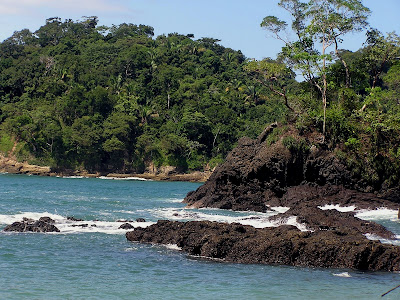
Today was the Pierce Conservation Districts work party for the Ohop stream restoration project. I learned about this work day through my last volunteer effort with the Nisqually Land Trust. Today's project was to get 1500 native plants in place. The plants had already been placed in rows and arranged in appropriate species distribution. We simply got them into the ground where they were plotted. The long range goal of the project is to redirect a stream into a new channel for improved fish habitat.

Ohop is nestled in a small valley not far from Elbe. When you take Highway 7 from Tacoma to get to Mt Rainier at Paradise, you must first travel the long corridor of chains, strip malls and other suburbia congestion behind Ft Lewis and McCord AFB. Just when you think you can stand no more, the buildings disappear and in very short time you descend into a small valley. You sigh, knowing you are in that place where the mountains begin and the modern world fades a bit.
This is the Ohop Valley. This barn is just north of the field we planted. Very pretty.

This morning it looked grim with rain and darkness as I set out. It is about a two hour drive south, so I wanted to make sure I had plenty of time to get there for the 900 start. When I pulled in there were already many people at work. This was certainly a big turnout and better still there was nothing but blue skies above. This Black Cottonwood keeps watch on the new neighbors.

We had a quick instruction on how to clear into the old turf of the pasture and dig a hole appropriate for the plant from the one gallon container. There were Douglas Fir, Black Cottonwood, Red Cedar, Snowberry Bush, a Rubus sp. plant we speculated was Salmonberry or Rose and what appeared to me to be a willow species. Together these will provide a nice woodland mix and provide shelter and food for many species. Birds and small mammals will distribute seeds of other native plants into the area.
Snowberry bush and rose hips along the stream.

It was fairly easy work. Once the long grasses were hacked aside the topsoil was quite wet and dug in easily. Despite the rain the soil was only wet about two inches down and the rest was quite dry and packed. Since this land had been pasture for so long, the grass roots were quite strong and thick. It is old volcanic mud flow and very free of rocks. The majority of the effort was put to breaking down the dry chunks and pulling out as much usable dirt as possible. One woman noted that even though you placed the plant and the nice soil from the pot in the hole, there never seemed to be enough dirt to fill the hole back up.
Pretty yellow roots of a Black Cottonwood tree

I suspected that there was a dirt sucking vortex under each dirt pile.
The organizers were very happy with the huge turnout. Since it is Halloween they thought for sure they would be down in numbers. It was good to see that easily 50% of the workers were junior , high school and college students. The planting was completed by 1100 and not a single raindrop fell. There were a lot of coats shed and everyone agreed that they overdressed for the weather.

As I drove home it was not five minutes north when I ran into driving rain. That went away just the other side of the convergence zone. Heading north on the Valley Freeway I could see way far to the north huge clouds. I am sure there are those hoping they are bringing snow to the upper elevations. The radar looks patchy.
I saw a bit of snow at home though. Returning from the store I heard a flock flying over. I knew they were not Canada Geese, too sweet a honking. Snow Geese, a small flock of 25, have returned. Last winter, for the first time I can remember, we had Snow Geese in the valleys between Redmond and Woodinville as well as the Carnation Duvall area. I even saw Snow Geese frequent Marymoor Park. Usually a small flock congregates in the Kent Valley and most famously in the Fir Island Skagit Flats area. I will no doubt get up to Fir Island for some Snow Goose and Swan observations. You can find two species of swan and the Snow Geese by the thousands.
It is always best done on one of those bright blue days when photographs are a joy to take.
















































